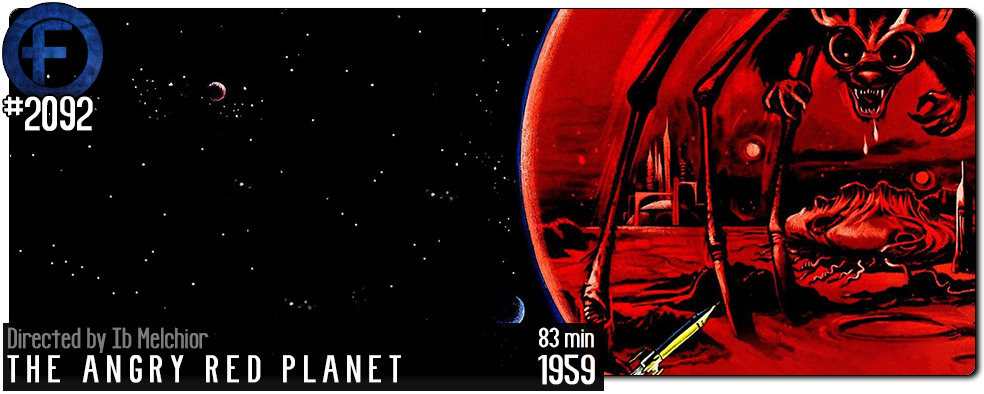Movie Review – Angry Red Planet, The
Principal Cast : Gerald Mohr, Naura Hayden, Les Tremayne, Jack Kruschen, Paul Hahn, J Edward McKinley, Tom Daly, Don Lamond, Edward Innes.
Synopsis: The crew of a rocket ship sent to Mars on a mission of exploration encounter terror and adventure on the surface of the Red Planet.
********
As much as space travel has permeated the popular consciousness, particularly since Neil Armstrong stepped foot on the moon in 1969, it’s hard to recall a time when flying off into space and finding alien life on distant planets wasn’t part of the Hollywood zeitgeist. The era of early space fantasy, of which 1959’s The Angry Red Planet is a charming little B-movie, has a gently nostalgic tone in which all manner of futurism is depicted, most of which is hugely fanciful and only a few things of which actually came to pass. Okay, so The Jetsons got a lot wrong, a lot of which is mirrored in this gem of a film lingering deep in the archives of cheap sci-fi outings you can view on streaming platforms, but the pleasantly engaging manner in which this film imbues its egregiously incorrect science with a substantial amount of fiction is laughably outdated but altogether charming in every respect.
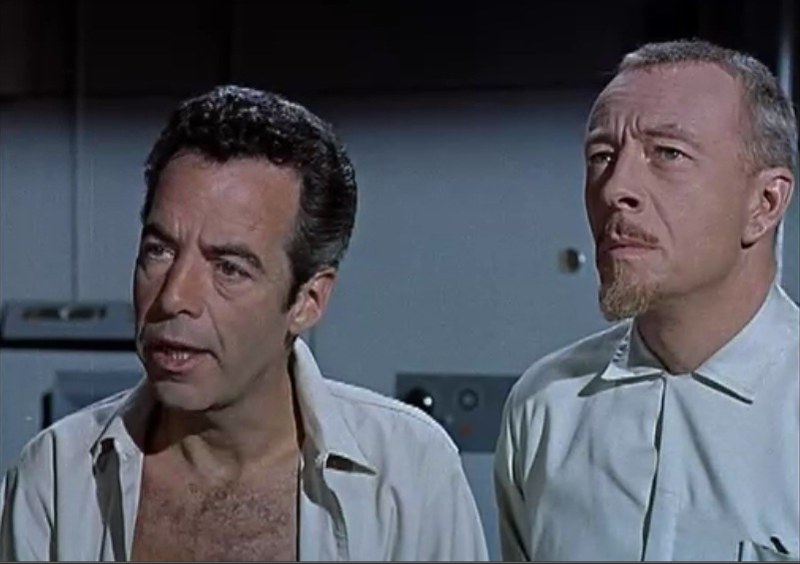
The Angry Red Planet is a by-the-numbers sci-fi story in which a group of people blast through space on an expeditionary force to Mars, where they find aliens and terror lurking around every red corner. Colonel Thomas O’Bannon (Gerald Mohr) is the kind of leader who takes his shirt of at every inopportune and impractical moment. Professor Theodore Gettell (Les Tremayne) is arguably the worst scientist in the world for a complete lack of scientific integrity, and Jack Kruschen’s Sam Jacobs, the rocket ship’s blue-collar muscle, offers scant but important comedic relief. Then there’s Naura Hayden’s impish Dr Iris Ryan, a woman with impeccable hairstyling aboard a space-faring tin can and who always keeps the ship ship-shape and the men well fed. Yes, you can cue up all the 50’s misogyny you like here, as Hayden’s role flirts with the idea of romantic intentions to her captain and straight-faced scientific discovery, neither of which she’s very good at or even apparently interested in. By today’s standards the film is poorly made, shoddily acted, and overloaded with plentiful stock photography, but there’s a whimsical of-the-period charm to The Angry Red Planet that makes this intermittently intelligent adventure worth a look.
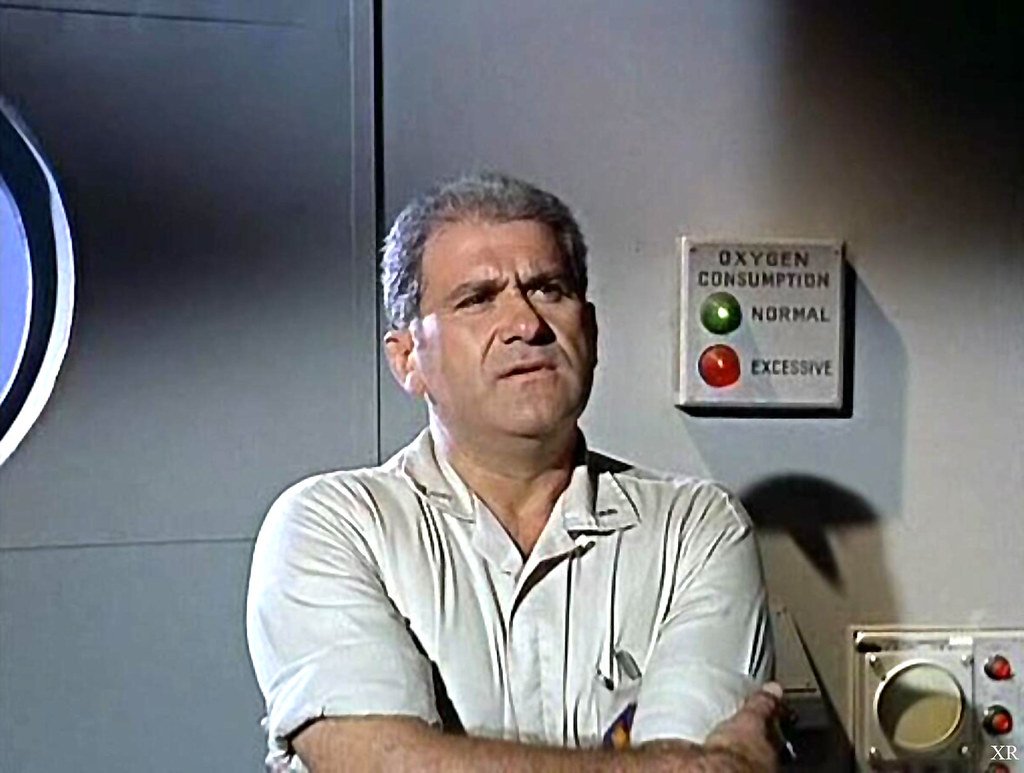
Despite being riddled with tropes, The Angry Red Planet’s main gimmick is a unique photochemical trick applied to key segments of the film that turn the image a vibrant, almost cartoonish red as our character begin to explore the surface of Mars – a surface, I might add, that’s a far cry from what we now know is down there on the red dust. Plants, lakes, cities and all kinds of vegetation and creatures lurk in the blazing red landscape, and the film utilised a unique developmental creative choice to achieve such a stark and (what I assume was) stunning visual motif. To keep costs down, all of the film’s Mars exteriors were shot in black and white (the majority of the film is in colour), with the monochrome film subjected to a process known as “solarisation”, a process that reverses the negative image so that elements of the film appear positive, with the resulting film tinted red in post production. Truly, the film’s vibrant red Mars sequences are quite the stunning effect, and used considerably well by director Ib Melchior to hide deficits in production design and budget while the ship’s crew is exploring the surface of the red planet.
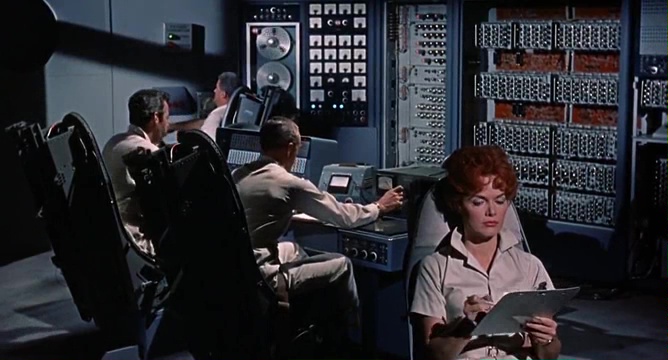
These sequences aside, the rest of the film looks like it was shot entirely inside a warehouse, with bargain-basement sets and cheap-looking visual effects and design work. The crew’s vessel, a phallic rocket ship emblematic of smooth 50’s design work, has a bridge that looks like an oversized loungeroom, complete with a bank of “futuristic” computer equipment and several banks of barely school-aged scientific equipment, which look positively antiquated by today’s standards. The four human occupants of the vessel suffer no cognitive deficits of their journey – counted off by both a standard kitchen wall clock and a flip calendar – or the effects of Mars’ lesser gravity (perhaps this wasn’t considered at the time of filming, and they seem to have almost no discernible sense of awe about their situation and predicaments. Both their journey to Mars as well as their subsequent exploration of the planet’s surface is plays oh so straight, as overly scientific as possible while remaining an earnest, quite enthusiastic monster movie of sorts. It’s as if the filmmakers seemed to think a trip to Mars was as standard as driving down to the store to pick up some milk. The film’s climactic Mars sequence showcases a substantive creative lift compared to the stodgier, cleanskin rocket-bound narrative, which goes a long way to staving off audience boredom and gentle chuckles at the inherent misogyny and sexism.

The characters all, from the top-down military generals and advisors, through to the core leading cast, are all extraordinarily generic, offering very little actual humanity to supplant the notarised pseudo-science and jingoism at play here, but I’d call this less a deficit in the scripting and more a lucky happenstance pleasure. The film plays to its (few) strengths and does it well enough given the budget and premise, and doesn’t try to pretend it’s something it isn’t. Gerald Mohr is a prototype of the Captain Kirk style of leadership – all go and no whoa, prone to flirting with any women in his immediate proximity, and still maintaining an aura of hairy masculinity presumptively displayed with a half-unbuttoned shirt at one point (I’m not sure what dress codes aboard NASA rockets is these days but I’m pretty sure swanning about like some testosterone-jacked lounge lizard isn’t the done thing); he has an aura of 40’s Humphrey Bogart about him and is far from what you’d call conventionally attractive in the modern sense, but the rugged charm the actor displays is engaging to say the least. His co-star, Naura Hayden, is the only bright shining star of femininity here, and while confined to reacting with terrified screaming at an unseen horror, or angry-smiling at Pleasantville-lite jibes from her shipmate cohort, she’s a strong-willed and surprisingly mobile heroine that offers more than your typical “damsel in distress” archetype. Jack Kruschen’s portly dock-worker aesthetic comes in handy as he wields the expedition’s only weapon, a weird sonic gun that emits a powerfully annoying whine but little actual effect, a precursor to James Cameron’s Aliens, perhaps. Kruschen gets the most laughs in the film, although this is such a low bar you’d hardly describe it as a positive.
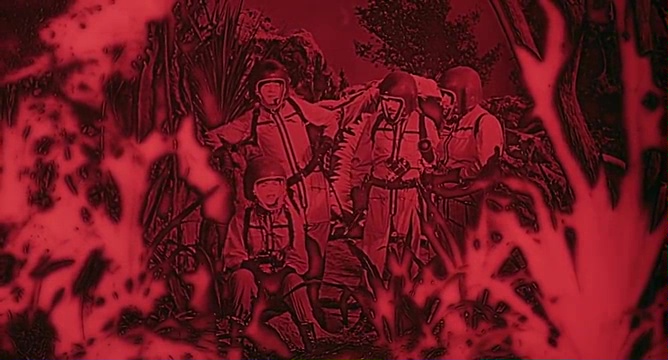
As out-of-date as the dialogue, socio-political commentary and production design all are, there’s still something utterly charming about The Angry Red Planet, a film with more bite in its title than fight in its framework. It’s a lacadaiscal, low-budget affair that whiffs of of-the-period directorial whimsy, a descendant of The Mysterious Planet without the ability to really show any spectacular effects. The whole thing looks to have been filmed in three rooms and a desiccated soundstage, it’s so cheap, but rather than count this as a flaw, I find it surprisingly refreshing. Notable for a remarkable in-camera photochemical treatment to give a solid rendition of being on Mars’ surface, and a couple of legitimate “how did they do that” shots, The Angry Red Planet is a soothing, quietly charming sci-fi throwback lacking modern ostentation and more than overcoming its shortcomings.

